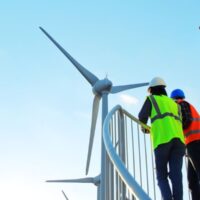Money is being promised to sustainability faster than it can be spent. Across major markets, US$35 trillion or 36 per cent of assets under management are being invested with sustainability in mind, but investors are stuck competing over a limited amount of bankable projects. Sustainable finance infrastructure, detailing the “rules of the game” for how sustainable finance is meant to flow, is struggling to keep up with all the new sustainability spending. In response, governments are upgrading finance infrastructure and a key approach has been to standardize information and diversify instruments. As Canada ramps up its sustainability spending, it should learn from these innovative infrastructure investments.
Sustainable finance only flows as fast as the information identifying projects as sustainable. Without consistent and universal information, it is costly and time-intensive for investors to identify good sustainable investments and to avoid those with exaggerated sustainability claims. As it stands, a study of six financial rating agencies found they collectively used 709 different metrics across 64 categories to rate sustainability performance. Financial centres around the world have consistently pegged the lack of standardized quality information as the top sustainable finance concern, and, after greenwashing, it is the main concern for Canadian sustainability investors.
Countries are putting infrastructure in place so that all investors have the same information and can make the same conclusions. At least 25 jurisdictions have adopted or are looking into adopting sustainable finance taxonomies, which provide a rubric for what a project must do to be considered a sustainable investment.
Chief among these is the European Union’s taxonomy, which has set best practices for defining “green finance” as a form of sustainable finance where investment flows towards an E.U. environmental objective. The E.U. taxonomy also defines a related form of sustainable finance known as “transition finance”, which it characterizes as finance for projects that do not currently have viable low-carbon alternatives but still support a pathway to 1.5° C. However, the E.U. has found it difficult to reach agreement on a robust definition of transition finance. This endangers financing for sectors with projects that are presently high-emitting but have large potential for lower emissions, like heavy industry facilities with long lifespans.
In Canada, the federal government’s Sustainable Finance Action Council (SFAC) recently released a roadmap report showing what a Canadian sustainable finance taxonomy might look like. This includes an approach for defining transition finance, which would be a key development for Canada given that heavy-emitting sectors account for large parts of the economy and workforce.
Countries are also standardizing information by setting up common infrastructure for sharing information. The main way information has been shared with investors is by requiring companies to disclose their sustainability information. The E.U. is again leading the way with its Corporate Sustainability Reporting Directive requiring almost all companies to disclose their internal sustainability risks and external sustainability impacts, starting in 2025 (for the 2024 financial year). The E.U. also requires large companies to disclose alignment with its taxonomy—non-financial companies starting in 2023 and financial companies starting in 2024. This extra year gives financial companies time to familiarize themselves with their clients’ information.
Currently, the European Central Bank’s initial climate risk modelling has found that banks are struggling to assemble robust models, incorporate physical and reputational risk, and access Scope 3 and energy performance data. Canada has recently taken a big stride forward with OSFI’s (Office of the Superintendent of Financial Institutions) guideline for climate risk management, although this would only require disclosure from financial companies. In contrast, E.U. disclosure regulation applies more widely across the economy, with the number of companies required to disclose jumping from 11,700 to 49,000 under the new rules. Canada could standardize tools for risk assessments and require disclosures from across the economy, by keeping the Canadian Sustainability Standards Board at pace with OSFI disclosure requirements and by introducing stronger regulation of energy performance disclosure.
Assured by standardized information, infrastructure can be built for new financial instruments that are able to move sustainable finance to new places. Globally, the energy sector has been the most popular recipient of sustainable finance, with green bonds being a primary financial instrument. This is a natural result of clean energy generation being a clear investment in sustainability and green bonds having established frameworks. However, it leaves investors competing to finance the same upstream clean energy generation projects through oversubscribed green bonds, resulting in underutilized capital. It also leaves a dearth of investment in more downstream projects that use clean energy. Research has warned that the growth in clean energy generation is failing to displace fossil fuels, and is only expanding energy use rather than transforming it. These same financing patterns are visible in Canada, where the majority of sustainable finance has so far been for clean energy generation projects and mainly through green bonds. However, governments are installing infrastructure for a diverse array of new instruments, which can make use of standardized information to reach new projects while still achieving sustainability.
Countries are under pressure to design infrastructure for instruments that can better spread sustainable finance across the economy. Traditionally, the rule has been that sustainable finance gets labelled as such because it’s invested into projects targeting an environmental objective. No explicit connection between the level of financing and environmental outcomes was thought to be necessary, because it could be assumed that a properly implemented project would lead to positive environmental outcomes. This assumption worked when investment only flowed to projects that could unambiguously improve sustainability like solar photovoltaic generation. However, for projects where causal sustainability is not guaranteed even if today’s best practices are followed—for example, emerging tech like carbon capture or efficiency improvements that could induce greater pollution, also traditionally green projects that end up consistently underperforming—instruments like green bonds are not equipped to handle uncertain outcomes.
Consequently, a new instrument called “sustainability-linked finance” (SLF) has been gaining acceptance, rising quickly from almost no issuance in 2016, to US$35 billion in 2018, to almost US$500 billion in 2021. Unlike green bonds, SLF follows a new rule where levels of investment can change based on measured sustainability outcomes, like lower emissions. It has tended to be used more in higher-emitting sectors, which raises new potential for impact but also has greater potential for misuse. So far there has been little guidance for SLF from governments. Singapore launched the first grant scheme to cover the initial costs of SLF in 2020, and Chile and Uruguay became the only governments to create frameworks for and issue sustainability-linked bonds in 2022. Canada has an opportunity to craft procedures and frameworks for this new form of finance, similar to how the European Investment Bank and the World Bank provided the original infrastructure for green bonds.
Meanwhile, countries are moving forward with infrastructure for instruments that can invest more deeply in projects. Whereas a single project might not offer big or safe enough financial returns to get the attention of big investors, when multiple small projects are aggregated together, the resulting project can present a more attractive investment opportunity. Canada could create infrastructure for aggregation by considering financing for sustainable projects on a more industrial and collective scale. For example, the E.U. taxonomy relaxed its proposed energy efficient building criteria from only the very best qualifying to the top 15 per cent, recognizing enough buildings for the aggregated green bond market to continue. Canadian financing agencies could also allow their financial assets to be packaged into tradable financial instruments. The U.S. government has issued almost US$100 billion mortgage-backed securities as aggregated green bonds, and both Finland’s local government funding agencies and U.S. home financing programs have issued green loans as aggregated green bonds.
Upgrading sustainable finance infrastructure is not the only way to coax more finance. It must be preceded by greater spending, ideally tailored toward correcting the market, and succeeded by innovation in project management. Just like real-world infrastructure, sustainable finance infrastructure plays a crucial role in enabling climate spending to flow productively. Also like real-world infrastructure, it would be prudent to invest in it before it starts to crack.








